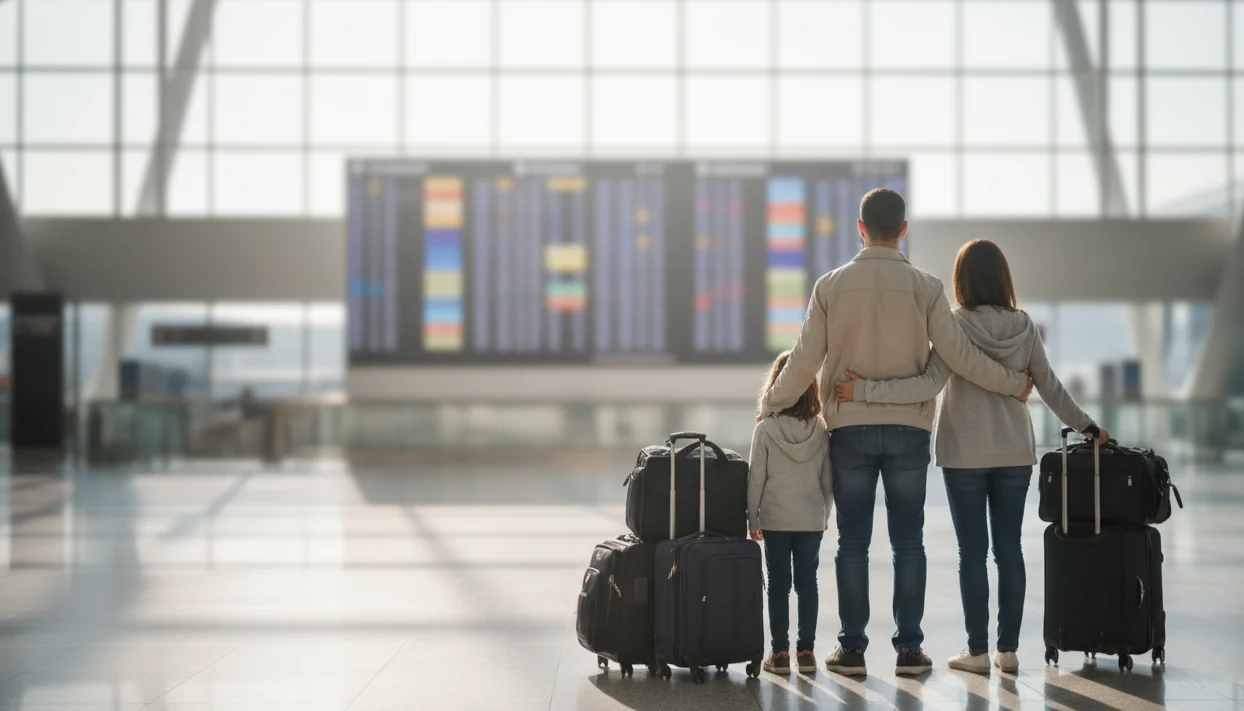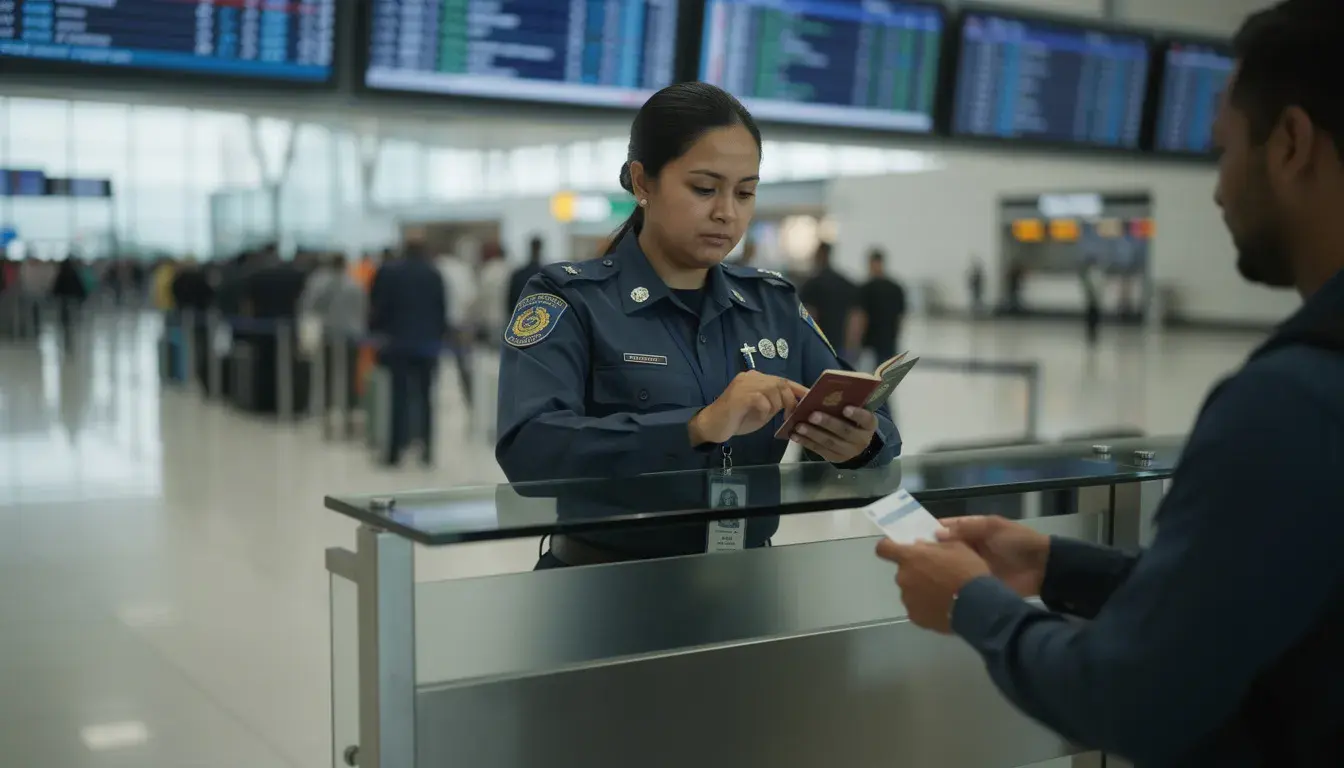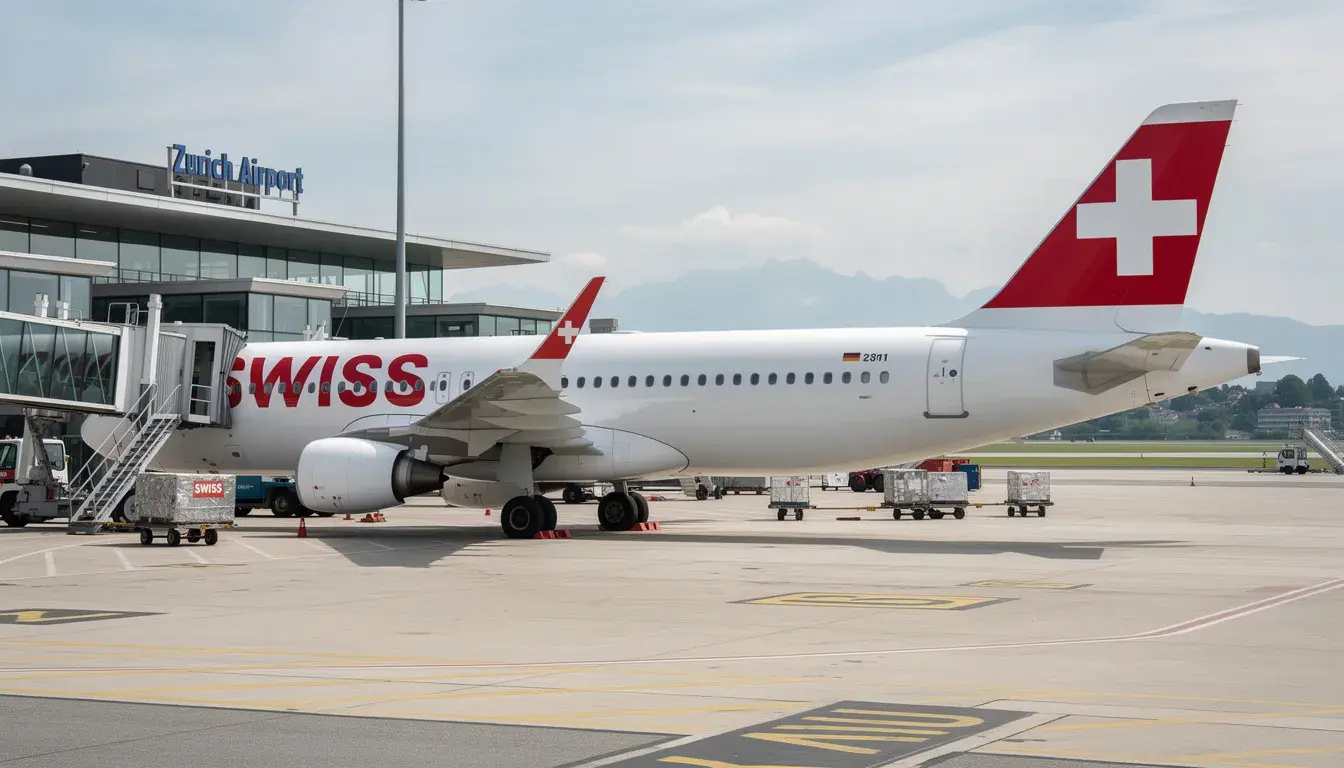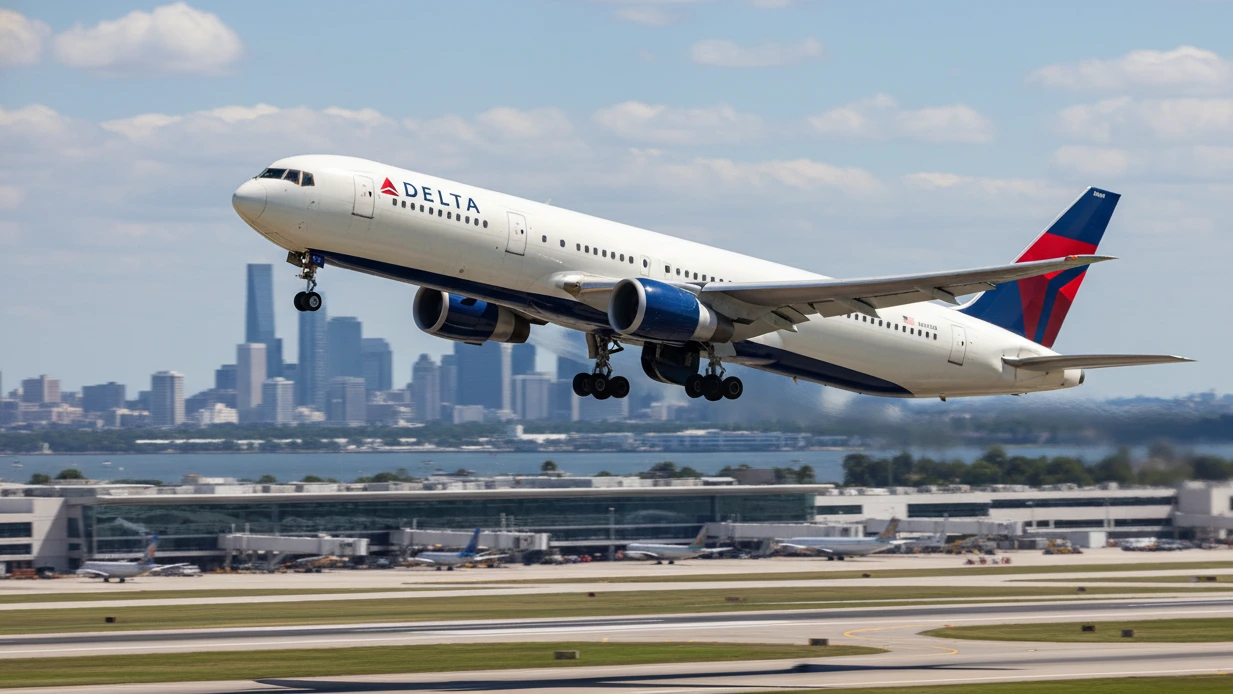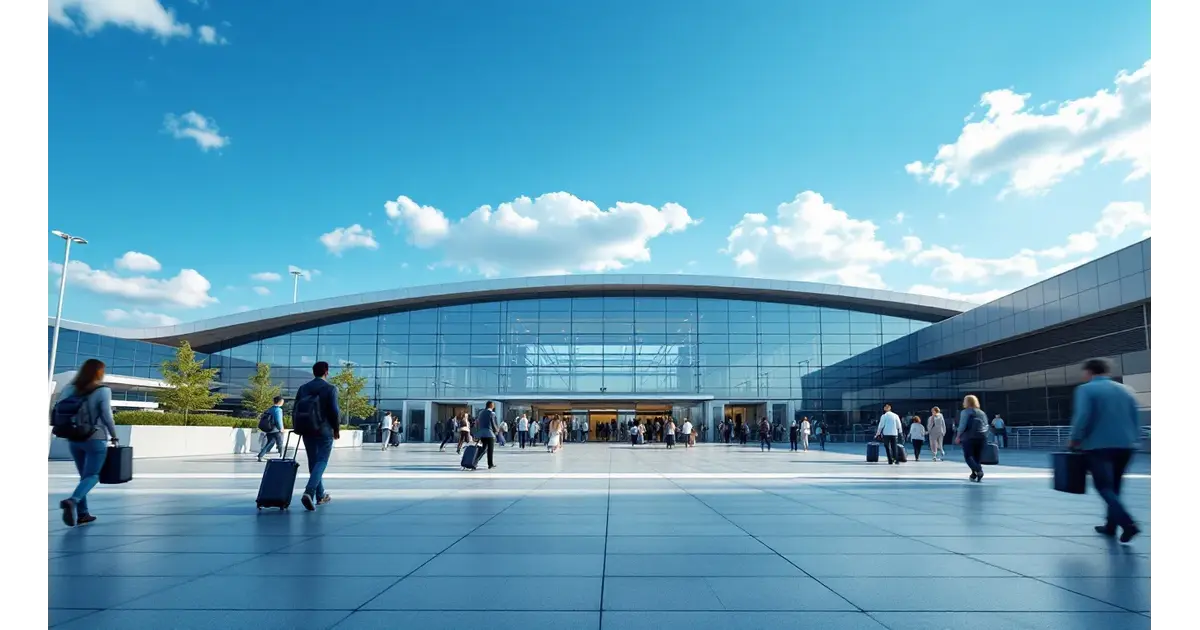Dummy Ticket for Schengen Visa from India (2025) — Embassy-Approved & Instant Delivery
If you’ve ever applied for a Schengen visa from India, you know the paperwork can feel endless. One document that always creates confusion is the dummy ticket. Some call it an itinerary, others call it a flight reservation—but it all comes down to one question: do you really need to buy a flight before your visa is approved? For more details on common visa queries, check our FAQ.
A dummy ticket for Schengen visa from India is a verified flight reservation that includes an authentic Passenger Name Record (PNR) and full itinerary details, accepted by European embassies as proof of travel intent. The Schengen Visa Code (Article 14) allows applicants to submit a flight reservation instead of a paid ticket, making dummy tickets a safe and legal option for Indian travelers. When booked through BookForVisa.com, each document is issued with a real airline PNR and instantly downloadable PDF — fully compliant with VFS Global and EU embassy documentation standards for visa applications.
Last updated: October 2025 — verified against Schengen Visa Code Article 14 and updated EU consulate policies for Indian applicants.
This post is here to make that clear. We’ll walk you through how embassies in Europe see a dummy ticket booking today, what rules have changed, and how you can handle your travel proof smartly without wasting money. Whether you’re a student, a first-time traveler, visiting family, or living the digital nomad dream, you’ll learn how to prepare your visa file confidently and avoid the rookie mistakes that get applications delayed or denied. To stay updated on visa tips, explore our blogs for the latest insights.
Table of Contents
Learn more about our team's expertise in guiding Indian travelers through the process on our About Us page. With these foundational tips, you're set to navigate the complexities ahead.
Dummy Ticket For Schengen Visa — What It Actually Means

Applying for a Schengen visa from India is like solving a puzzle, and one of the trickiest pieces is the dummy ticket. You’ve probably heard different versions of what it is—some say it’s just a temporary flight plan, others call it a fake ticket. Let’s clear that up once and for all.
Talking Airline Lingo Without Losing Your Mind
If you’ve spent hours on travel forums or VFS Facebook groups, you’ve likely come across phrases like “flight itinerary,” “onward ticket,” “PNR,” or “temporary hold.” They all sound similar, but each means something slightly different.
Let’s unpack them the way a visa officer would.
-
Paid E-Ticket: This is a confirmed flight booking—you’ve paid in full, and the airline has issued a ticket number (it starts with the airline code like 098, 217, etc.). You can check it directly on the airline’s website using your PNR (Passenger Name Record).
-
Flight Reservation or Itinerary: This is a temporary hold, often created by a travel agent or flight reservation service. It looks identical to a paid ticket but doesn’t require full payment. The status usually reads “On Request,” “Reservation,” or “Pending Ticketing.”
-
Onward Ticket: This is proof that you’ll exit the Schengen area. It can be a return ticket or a flight from Europe to another non-Schengen country (say, from Paris to London or Zurich to Dubai).
-
Temporary Hold: Some airlines allow you to hold a booking for 24–72 hours before payment. You can print this hold as a document to include with your visa file.
For Schengen visa purposes, a flight reservation or temporary hold is what embassies expect—not a fully purchased ticket. They simply want to see that your travel plans are real, structured, and consistent with your purpose of travel. For official guidelines, refer to Schengen Visa Info.
How Embassies Actually Phrase It (And How You Should Read Between The Lines)
When you read embassy instructions on official websites, the wording can sound vague: “Submit a travel itinerary showing entry and exit.”
But here’s the secret—you don’t need a paid ticket unless the embassy specifically says so. Let’s decode a few common phrases seen by Indian applicants:
-
“Proof of itinerary or reservation of round-trip flight.”
This means a verifiable booking with your name, travel dates, and flight numbers. Payment not required. -
“Confirmed booking (not necessarily paid).”
Don’t be thrown off by the word “confirmed.” It means your reservation exists in the system—not that it’s ticketed. -
“Do not purchase your ticket before visa approval.”
This is the embassy politely saying, “We don’t want you to lose money if your visa is refused.” -
“Proof of return or onward travel.”
This is about showing that you intend to leave the Schengen area. You can provide a return booking to India or an onward flight out of Europe.
Each embassy phrases things slightly differently, but the logic is consistent: they want proof of intention, not financial commitment. This approach ensures your application remains cost-effective while meeting all requirements.
Why Embassies Have Become Stricter Lately — Especially For Indian Applicants
A few years ago, dummy tickets were easy to get and almost never verified. That’s changed. Schengen embassies and VFS centres in India have tightened their checks for three key reasons:
-
Shorter Validity Windows:
Airline holds now often expire within 24–48 hours. Embassies know this and can easily detect expired PNRs when cross-checking applications. -
PNR Verification:
Some consulates now validate PNRs through internal systems. If your flight reservation isn’t traceable in the airline database, it raises doubts about your entire file. -
Document Consistency:
Officers look at how your flight, hotel, and travel insurance line up. If your flight shows arrival in Italy on June 2 but your hotel booking starts June 5, that inconsistency will likely draw attention.
This isn’t meant to scare you—it’s to remind you that the era of sloppy dummy tickets is over. The focus today is on authentic, verifiable reservations that genuinely reflect your travel plan. As Indian applications have surged in recent years, these checks help maintain the integrity of the process for everyone involved.
Drawing The Line: Proof Of Travel Plans Vs. Fake Documents
Let’s get one thing straight: a dummy ticket is not a fake ticket. It’s a legitimate, temporary booking issued through a recognized system—usually via a travel agency, airline hold, or accredited reservation partner.
Here’s how to tell the difference:
-
A legitimate dummy ticket:
-
Has a valid PNR that can be checked on the airline’s website.
-
Matches your name, passport number, and travel dates.
-
Usually expires in 48–72 hours.
-
-
A fake ticket:
-
Is generated through Photoshop or a fake generator.
-
Doesn’t exist in the airline system.
-
Can get your application refused and even blacklisted.
-
Submitting a falsified ticket can trigger serious consequences—especially if detected during verification. Always use genuine reservations. Opting for verifiable options not only complies with rules but also builds credibility with visa officers who review thousands of files monthly.
What Happens If You Submit A Fake Or Unverifiable Ticket
It’s tempting to think, “It’s just a piece of paper; who’s checking?” But here’s what could happen if your PNR doesn’t match up:
-
The embassy may request resubmission of valid documents, delaying your process.
-
Your visa could be rejected for document inconsistency.
-
You could be flagged in the Schengen Information System (SIS), which other European countries also access.
-
In repeat cases, VFS staff might even mark your file for additional verification next time.
The truth is simple: fake tickets are a shortcut that backfires. Embassies don’t expect you to risk your savings—they just expect your documents to be real. To avoid these pitfalls, always prioritize services that provide traceable bookings from the start.
When It Actually Makes Sense To Buy A Real Ticket
Sometimes, paying for a confirmed ticket upfront does make sense. Let’s see when that applies:
-
Last-Minute Travelers:
If your visa appointment is close to your departure date, booking a refundable ticket might save time. -
Promotional Fares:
Airlines often run discounts that won’t last. If your travel dates are fixed, it might be worth booking early. -
Visa Re-Submissions:
If your application was returned for missing documents, a paid ticket might demonstrate stronger intent to travel.
However, for most Indian applicants—especially students, first-timers, and families—a verifiable dummy reservation is enough. It protects your budget and still satisfies the embassy’s requirement. In fact, with rising airfares, this strategy has become even more essential for budget-conscious travelers from cities like Delhi and Mumbai.
Now that you know what a real dummy ticket really means and how embassies interpret it, you’re already more confident than most applicants. You understand that a legitimate reservation is about planning smartly, not pretending.
Plan Your Application The Smart Indian Way: Timelines, Routing, And Documents That Align

Planning your Schengen visa from India is less about luck and more about structure. The embassy officers are trained to spot patterns—clear, logical ones get approved faster. When your flight reservations, hotel bookings, and insurance documents all align, your file tells a single, consistent story. That’s what we’ll master here: building a travel plan that feels real, believable, and easy to verify. This structured approach has helped countless Indian applicants streamline their process and increase approval rates.
Choose The Right Consulate Using The “Main Destination” Rule
This is the first—and possibly most misunderstood—step of the visa application process. You must apply through the Schengen country where you’ll spend the most nights, or if that’s equal, the country of your first entry.
Here’s a common mistake: you’re flying from Mumbai to Paris, spending two nights in France and five in Italy. You should apply through the Italian consulate, not the French one, even if your departure and arrival airports are in France.
Let’s take a few India-specific examples to make this clear:
-
Delhi → Paris → Rome → Delhi: Apply through Italy since you’ll stay longer there.
-
Bengaluru → Amsterdam → Zurich → Bengaluru: Choose the Netherlands consulate if your longest stay is in Amsterdam.
-
Chennai → Frankfurt → Prague → Vienna → Chennai: Apply to Germany only if you spend the most nights there.
Submitting your visa application to the wrong consulate can delay approval or, in some cases, even lead to rejection. Always check the visa rules on the official consulate website or VFS Global page for updated routing policies. Double-checking this early can save weeks of hassle.
Map Your Travel Calendar: VFS Appointments, Processing Windows, Blackout Periods
Now that you know which consulate to target, it’s time to back-plan your entire timeline. Indian travelers often underestimate how long the Schengen visa application process really takes.
Here’s a simple backward timeline you can use:
-
Travel Date – 90 Days: Schengen applications open 90 days before your departure. Start preparing your documents now.
-
Travel Date – 60 Days: Book your visa appointment date through VFS. The popular centres like Delhi, Mumbai, and Bengaluru fill up fast, especially before summer.
-
Travel Date – 45 Days: Gather supporting documents—bank statements, dummy hotel booking, travel insurance, and your temporary flight reservation.
-
Travel Date – 30 Days: Submit biometrics and complete your file.
-
Travel Date – 15 Days: Normal processing time, but embassies can take longer during peak months.
Also, check for blackout periods—European holidays like Easter or local Indian public holidays can stretch your timeline. The trick is to build a buffer. Never assume you’ll get your ticket immediately after applying. Plan patiently. Incorporating flexibility in your timeline, such as buffer days for document updates, ensures smoother sailing through the process.
Design A Realistic Itinerary That Matches Your Purpose (Tourism, Business, Family Visit)
Your itinerary should tell the same story as your cover letter. If you’re traveling for tourism, design a plan that makes sense geographically and financially. Don’t cram ten cities into seven days—it looks forced and unrealistic.
For a tourist visa, your Schengen visa flight itinerary should reflect logical routing. For instance, a Delhi → Paris → Amsterdam → Rome → Delhi plan works perfectly when your flight details match hotel stays.
If it’s a business trip, add your meeting schedule, invitation letters, and corresponding flight tickets. Family visits should include proof of relationship and stay address.
And for digital nomads or freelancers, align your travel details with your remote work commitments. Embassies don’t expect perfection, just a believable plan that proves you’re returning home. Tailoring your itinerary to your specific purpose not only satisfies requirements but also demonstrates genuine intent.
Synchronize Proofs: Flights, Hotels, Insurance, Bank Statements, Leave Letters
Embassy officers cross-check everything. Your flight numbers, departure, and hotel dates should match perfectly. If your actual flight reservation shows arrival in Italy on July 3, your first hotel booking shouldn’t start July 5.
Make sure your:
-
Flight reservations align with hotel stays and travel insurance coverage.
-
Employer leave letter matches travel dates and return date.
-
Bank statements reflect funds enough for daily expenses, not just visa fees.
-
PAN or Aadhaar references are only included if required by the specific embassy.
When these documents sync properly, it builds trust. A verifiable flight reservation with a visible booking reference number shows preparedness.
If you use dummy ticket services or a dummy ticket booking, make sure the PNR is real and checkable. Reliable dummy ticket providers deliver dummy tickets from major airlines like Qatar Airways or Singapore Airlines so your reservation appears authentic. This synchronization is crucial, as even minor discrepancies can prompt additional scrutiny from visa officers.
Multiple Country Hops And Schengen Zones: Sample Routings That Work
You can absolutely visit multiple countries under one visa—if your routing makes sense. Think of your plan as a road trip, not a teleportation map.
Here are a few clean, believable itineraries:
-
Delhi → Paris → Amsterdam → Rome → Delhi – A classic Western Europe loop, easily connected by train or budget flight.
-
Mumbai → Vienna → Budapest → Prague → Mumbai – Central Europe with clear ground links.
-
Bengaluru → Zurich → Milan → Nice → Bengaluru – Logical route with short distances and scenic connections.
When booking your dummy flight tickets, ensure the cities and flight seats reflect natural travel flow. The goal is to make the journey look smooth, not rushed. These sample routings are based on popular paths taken by Indian travelers, ensuring they align with common flight schedules and reduce the risk of inconsistencies.
Avoid Mismatches That Trigger Queries (And How To Fix Them)
Embassies spot mismatches instantly. Avoid these common red flags:
-
Your dummy air ticket shows arrival in Germany, but your hotel is in Spain.
-
Your dummy flight departs on a different date from your insurance coverage.
-
You book a non-refundable ticket before your visa approval.
-
You show a cheap dummy ticket with missing details like e ticket number or wrong departure and arrival airports.
Fixing these is simple. Recheck all travel documents before submission. If your actual reservation changes, reissue an updated version. Remember, embassies accept dummy tickets if they are genuine and match your story. Proactive fixes like these can turn a potential rejection into a swift approval.
Special Cases For Indian Applicants: Minors, Students, Frequent Travelers, First-Timers
Every category has unique requirements:
-
Minors: Need consent letters signed by both parents and school permission if traveling during the term.
-
Students: Must show university enrollment proof and enough funds. If on scholarship, include documents from the sponsor.
-
Frequent Travelers: Highlight past travel history—it shows reliability.
-
First-Timers: Include a strong explanation letter outlining your travel purpose and how you’ll fund the trip.
In each case, the actual ticket or dummy airline ticket should be consistent with your supporting papers.
A dummy flight ticket legal for embassy use helps these applicants confidently show plans without financial risk. For students, in particular, integrating scholarship proofs with a verifiable dummy ticket strengthens the financial stability narrative, a common concern for this group.
By now, you’ve structured your plan from the ground up. You know your consulate, mapped your timeline, built your route, and synchronized your proofs. The next step is securing a confirmed flight ticket or temporary flight reservation without paying the full fare.
👉 Order your dummy ticket today to keep things moving smoothly.
Book Smart Without Burning Cash: India-Friendly Ways To Secure A Verifiable Flight Hold
By now, you’ve learned how to plan your Schengen trip logically. You know which consulate to approach and how to align your flights and hotels. Now it’s time to tackle the trickiest part—how to book a dummy ticket without paying the full fare upfront.
The good news? You can absolutely do it. Airlines, travel agents, and even a few online platforms let you hold or reserve seats without buying a full ticket. You just need to know which method works best for your case and how to check that your PNR actually exists.
Let’s go through the smart, ethical options step by step. These methods are tailored for Indian users, considering local payment systems and high-demand routes to Europe.
Seven Legit Ways To Get A Valid Reservation Without Full Payment
Indian travelers have multiple ways to secure flight reservations that embassies accept. Each method has pros and cons depending on your travel style, urgency, and comfort level.
-
Airline Holds
Some airlines let you “hold” a booking for 24 to 72 hours without paying in full. It’s one of the most reliable options.-
Pros: Direct from airline systems, always verifiable, no middleman.
-
Cons: Few airlines offer this for India, and holds often expire quickly.
-
Example: Qatar Airways, Lufthansa, or Emirates sometimes allow paid or free holds depending on the fare type.
-
-
Consolidator Bookings
Travel consolidators or accredited agents can issue temporary reservations through official booking systems.-
Pros: Legitimate and usually valid for 48–72 hours; comes with a real PNR.
-
Cons: You rely on the agent’s credibility—some issue untraceable files if you’re not careful.
-
-
Refundable Fares With Cancellation Windows
You can book a real ticket with a full refund option and cancel once your visa is approved.-
Pros: You get a 100% verifiable booking and flexibility.
-
Cons: Refunds can take weeks, and cancellation charges might apply.
-
-
Mileage or Points Holds
If you have frequent flyer miles, you can hold award tickets for a few days before confirming.-
Pros: No cash involved; works well if you already travel often.
-
Cons: Limited to loyalty members; not every airline allows this feature.
-
-
Accredited Travel Agent Reservations
Many Indian agents have access to airline reservation systems like Amadeus or Sabre. They can create a PNR in minutes.-
Pros: Ideal for those unfamiliar with online booking systems.
-
Cons: Choose only IATA or well-reviewed agencies to avoid fake documents.
-
-
Multi-Carrier Holds
Some agents can create linked reservations across different airlines, especially for complex itineraries with multiple stops.-
Pros: Great for multi-country Schengen plans.
-
Cons: Slightly higher cost and shorter validity windows.
-
-
Pay-Later OTAs (Online Travel Agencies)
Platforms like MakeMyTrip or Cleartrip occasionally allow “book now, pay later” options on select airlines.-
Pros: Quick and easy if you prefer online convenience.
-
Cons: Not available for all routes and can expire fast.
-
The best method depends on your timeline. If your visa appointment is within a week, an accredited travel agent is safest. If you have a month, try an airline hold or refundable fare. Each option balances convenience and reliability, ensuring you get a hold that lasts through your submission.
How To Check If A PNR Is Verifiable
Once you have your reservation, always check that it exists in the airline’s system. Here’s how:
-
Find your PNR (Passenger Name Record) or booking code—it’s a six-letter combination on your itinerary.
-
Go to the airline’s official “Manage Booking” page and enter the PNR with your last name.
-
If your booking appears with details like flight number, route, and travel dates, you’re good.
You might see one of these statuses:
-
Ticketed: You’ve paid and have a valid e-ticket number.
-
Reserved: Your seat is held but not paid for yet—perfectly fine for visa submission.
-
Cancelled/Expired: The hold expired; you’ll need a new one.
You can also cross-check using third-party GDS sites (like CheckMyTrip or ViewTrip) if your booking system supports it. Just never rely on a document that can’t be verified online.
If your agent can’t provide a verifiable PNR, that’s a red flag. Verification is a quick step that can prevent major headaches later in the process.
Using Indian Payment Methods Safely (UPI, Netbanking, RuPay, Credit/Debit)
Booking online or through an agent from India can sometimes trigger failed transactions, especially with international gateways. To avoid issues:
-
Use UPI or Netbanking for local platforms—it’s fast and traceable.
-
RuPay cards might not always work on foreign airline sites; Visa or Mastercard is safer.
-
Credit cards offer better protection for refundable fares.
-
Avoid sharing OTPs with anyone, even agents. A legitimate dummy ticket provider will never ask for it.
For agents, prefer digital invoices or receipts so you can track payments if the reservation needs reissue later. These tips ensure secure transactions, especially for first-time international bookers from India.
24-Hour And 72-Hour Holds: Airline And OTA Policies Explained
Time your booking smartly around your visa slot. Most Schengen embassies don’t mind if your flight hold expires after submission, as long as it was valid when you applied.
Here’s what works well for Indian applicants:
-
If your VFS slot is within 24 hours, a 24-hour hold is perfect—submit and you’re done.
-
If it’s 2–3 days away, get a 72-hour reservation to cover the gap.
-
If your hold expires early, contact your agent to refresh it before the appointment.
Just don’t panic if your reservation shows “cancelled” after submission; embassies understand that flight holds naturally expire. Understanding these policies allows you to align your booking precisely with your appointment schedule.
Round Trip, Multi-City, Or Dummy Return—Which Suits Your Case?
Your flight structure should match your travel purpose.
-
Round Trip: Ideal for tourism or family visits. A simple “India → Europe → India” route is clean and believable.
-
Multi-City: Perfect for cultural or educational trips—like “Delhi → Paris → Amsterdam → Rome → Delhi.”
-
Onward Flight: Useful if you’re entering Europe but exiting from another region, such as “Chennai → Frankfurt → London → Chennai.”
The embassy doesn’t need you to buy a real ticket yet—they just want to see clear entry and exit points that prove your return plan. Choosing the right structure simplifies verification and strengthens your overall application narrative.
Real-World Scenarios From India (Solo Traveler, Family Of Four, Business Trip)
Let’s make it real.
Solo Traveler:
You’re a first-timer flying from Mumbai to Italy. You contact an accredited agent who issues a 72-hour reservation on a major airline. You check it on the airline’s site, print the itinerary, and align it with your hotel bookings.
Family Of Four:
Your family from Delhi plans a summer holiday in France and Spain. Instead of buying expensive return tickets, you get a group reservation through a travel consolidator. It stays valid long enough to submit your visa file and proves everyone’s traveling together.
Business Trip:
You’re flying from Bengaluru to Germany for meetings. You use a refundable fare because the dates might shift. Once the visa is approved, you confirm the same flight or adjust it as needed.
Each approach fits the traveler’s situation—no wasted money, no unnecessary stress. These scenarios highlight how adaptable these methods are to diverse Indian travel needs, from solo adventures to family vacations.
Troubleshooting: PNR Expired, Name Errors, Wrong Dates
If something goes wrong, fix it quickly before it affects your visa file.
-
PNR Expired: Ask your agent to reissue the reservation or hold again for the same route.
-
Name Errors: Minor typos can be corrected easily before ticketing—make sure names match your passport.
-
Wrong Dates: Update your cover letter and hotel bookings immediately. Consistency across all documents is key.
Never ignore mismatches, even small ones. Embassies appreciate applicants who correct issues proactively. Quick troubleshooting like this keeps your application on track and demonstrates responsibility.
Smart booking isn’t about shortcuts—it’s about control. Once you know how to secure and verify your reservation, you remove one of the biggest stress points in your visa journey. In the next section, we’ll look at how you can delegate this entire process safely to a trusted service that handles verifiable, embassy-friendly dummy tickets for Indian applicants who’d rather not juggle all the details themselves.
Choose A Trusted Partner: Genuine Dummy Tickets Made Simple For Indian Applicants
When you’re deep into your visa process, the last thing you want is to stress over fake or unverifiable bookings. That’s exactly why trusted services exist—to make your journey smoother with real, embassy-ready reservations that look and function like the real thing. Every dummy ticket for visa issued comes with a genuine, verifiable PNR. It’s created directly through trusted systems used by airlines, not some fake generator.
You’ll receive a professional PDF with your name, flight route, travel dates, and booking code. It’s checkable on the airline’s “Manage Booking” page—so even immigration authorities can verify it instantly if needed. Whether you want a one-way or round-trip ticket, each file includes full flight details and complies with Schengen format standards.
The process is quick: fill out your info, book a dummy ticket, pay securely, and download your dummy flight ticket online within minutes. You can even request unlimited date changes at no extra cost—perfect if your visa appointment gets rescheduled. Every booking means reserving flight seats, not creating fake files, ensuring your valid ticket aligns perfectly with embassy expectations.
We also handle special cases, from business travelers to students. Our genuine dummy ticket system ensures you never risk losing money on a real flight ticket before approval. Travelers from Delhi to Bengaluru trust these services to avoid visa cancellation issues and stay compliant. So, if you want to book dummy tickets that simplify your application and save time, it's the reliable, India-friendly choice to finish your journey confidently.
👉 Ready to make your Schengen visa application stress-free? Get your genuine dummy ticket now!
Frequently Asked Questions About Dummy Tickets for Schengen Visa
What is a dummy ticket exactly?
A dummy ticket is a temporary flight reservation with a real PNR, valid for visa purposes without full payment. It proves your travel intent without financial risk.
Can embassies verify my dummy ticket?
Yes, genuine dummy tickets have traceable PNRs that embassies can check on airline sites, ensuring authenticity.
How long is a dummy ticket valid?
Typically 24-72 hours, but extensions are available from trusted providers to cover your submission window.
Is using a dummy ticket legal for Schengen visas?
Absolutely—it's a standard practice recommended by embassies to avoid buying tickets prematurely.
What if my dummy ticket expires before approval?
Embassies only need it valid at submission; reissue if needed for any post-approval checks.
These FAQs address the most common concerns from Indian applicants, helping you prepare thoroughly.







